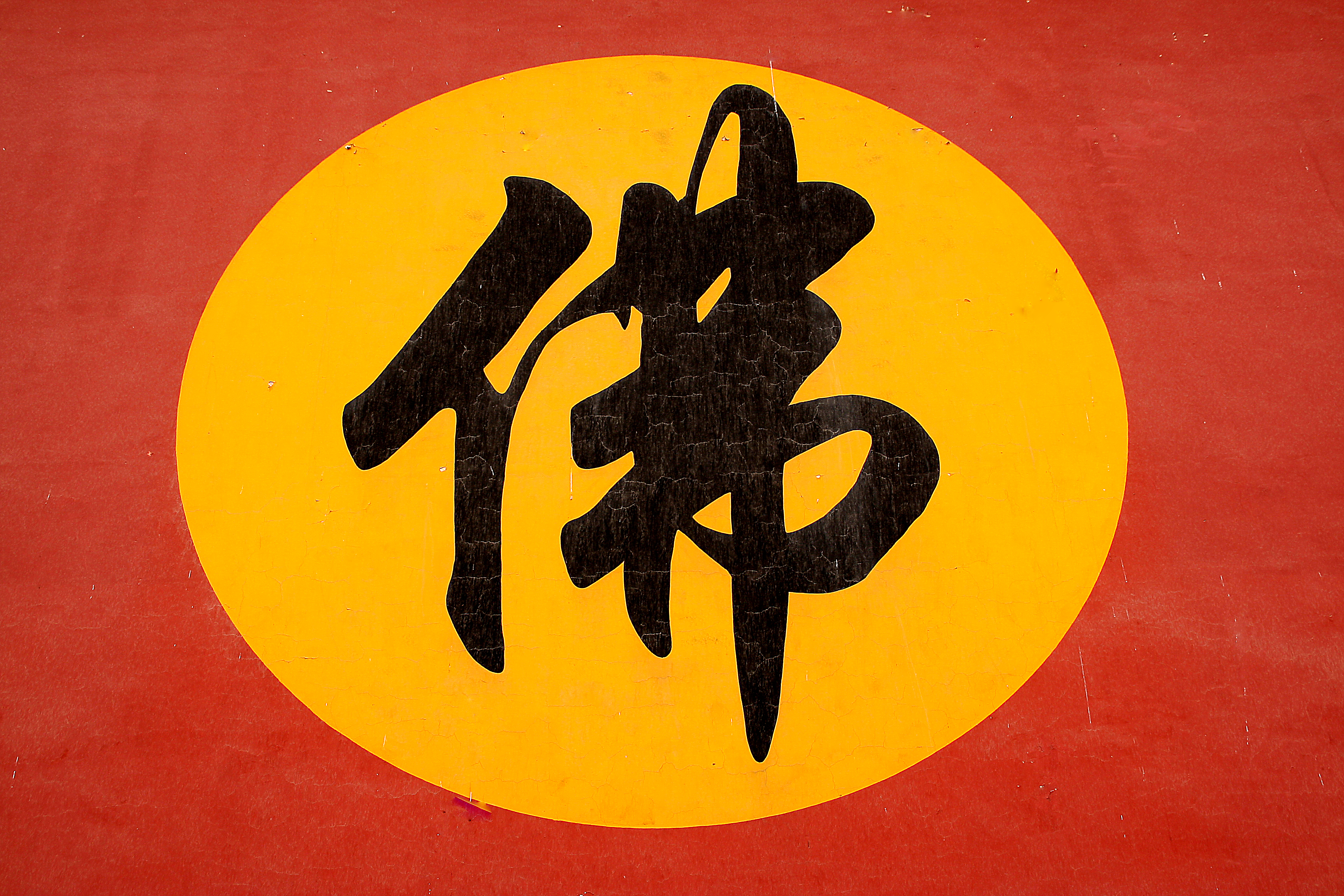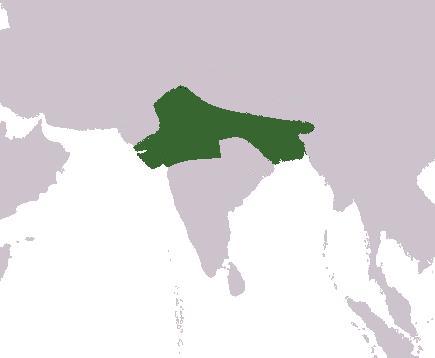|
Sengcan
Jianzhi Sengcan (; Hànyǔ Pīnyīn, Pīnyīn: ''Jiànzhì Sēngcàn''; Wade–Giles: ; Romanization of Japanese, Rōmaji: ) is known as the Third Chinese Patriarch of Chán after Bodhidharma and thirtieth Patriarch after Siddhārtha Gautama Buddha. He is considered to be the Dharma successor of the second Chinese Patriarch, Dazu Huike (Chinese language, Chinese: ; Pinyin, Pīnyīn: ''Dàzǔ Huìkě''; Wade–Giles: ; Romanization of Japanese, Rōmaji: ). Sengcan is best known as the putative author of the famous Chan Buddhism, Chan poem, ''Xinxin Ming'' (Chinese language, Chinese: ; Pinyin, Pīnyīn: ''Xìnxīn Míng''; Wade–Giles: ), the title of which means "". Biography The year and place of Sengcan's birth are unknown, as is his family name. Huike It is said that Sengcan (old spelling: Tsang Tsan) was over forty years old when he first met Huike in 536 and that he stayed with his teacher for six years. (Dumoulin, p 97) It was Huike who gave him the name Sengcan (“Gem M ... [...More Info...] [...Related Items...] OR: [Wikipedia] [Google] [Baidu] |
Dao Xin
Dayi Daoxin (Chinese language, Chinese: 大毉道信; Pinyin: ''Dàyī Dàoxìn;'' Wade–Giles: ''Ta-i Tao-hsin;'' Romanization of Japanese, Rōmaji: ''Daii Dōshin''), who lived from 580 to 651, was the fourth Chán Buddhist Patriarch, following Sengcan, Jianzhi Sengcan (Chinese language, Chinese: 鑑智僧璨; Hànyǔ Pīnyīn, Pīnyīn: ''Jiànzhì Sēngcàn''; Wade–Giles: ''Chien-chih Seng-ts'an''; Romanization of Japanese, Rōmaji: ''Kanchi Sōsan'') and preceding Daman Hongren (Chinese language, Chinese: 弘忍; Pinyin: ''Hóngrěn''; Wade–Giles: ''Hung2-jen3''; Romanization of Japanese, Rōmaji: ''Kōnin/Gunin''; Revised Romanization of Korean, Korean romanization: ''Hong'in''). The earliest mention of Daoxin is in the "Further Biographies of Eminent Monks" (Chinese language, Chinese: 續高僧傳; Hànyǔ Pīnyīn, Pīnyīn: ''Xù Gāosēng Zhuàn''; Wade–Giles: ''Hsü Kao-seng Chuan''; Romanization of Japanese, Rōmaji: ''Zoku Kosoden'') by Tao-hsuan (d. 667). A lat ... [...More Info...] [...Related Items...] OR: [Wikipedia] [Google] [Baidu] |
Dayi Daoxin
Dayi Daoxin ( Chinese: 大毉道信; Pinyin: ''Dàyī Dàoxìn;'' Wade–Giles: ''Ta-i Tao-hsin;'' Rōmaji: ''Daii Dōshin''), who lived from 580 to 651, was the fourth Chán Buddhist Patriarch, following Jianzhi Sengcan ( Chinese: 鑑智僧璨; Pīnyīn: ''Jiànzhì Sēngcàn''; Wade–Giles: ''Chien-chih Seng-ts'an''; Rōmaji: ''Kanchi Sōsan'') and preceding Daman Hongren ( Chinese: 弘忍; Pinyin: ''Hóngrěn''; Wade–Giles: ''Hung2-jen3''; Rōmaji: ''Kōnin/Gunin''; Korean romanization: ''Hong'in''). The earliest mention of Daoxin is in the "Further Biographies of Eminent Monks" ( Chinese: 續高僧傳; Pīnyīn: ''Xù Gāosēng Zhuàn''; Wade–Giles: ''Hsü Kao-seng Chuan''; Rōmaji: ''Zoku Kosoden'') by Tao-hsuan (d. 667). A later source, the "Annals of the Transmission of the Dharma-treasure" ( Chinese: 傳法寶記; Pīnyīn: ''Chuánfǎ Bǎojì''; Wade–Giles: ''Ch'üanfa Paochi'') written around 712, gives further details of Daoxin's life. As with many of the very ... [...More Info...] [...Related Items...] OR: [Wikipedia] [Google] [Baidu] |
Chan Buddhism
Chan (; of ), from Sanskrit '' dhyāna'' (meaning " meditation" or "meditative state"), is a Chinese school of Mahāyāna Buddhism. It developed in China from the 6th century CE onwards, becoming especially popular during the Tang and Song dynasties. Chan is the originating tradition of Zen Buddhism (the Japanese pronunciation of the same character, which is the most commonly used English name for the school). Chan Buddhism spread from China south to Vietnam as Thiền and north to Korea as Seon, and, in the 13th century, east to Japan as Japanese Zen. History The historical records required for a complete, accurate account of early Chan history no longer exist. Periodisation The history of Chan in China can be divided into several periods. Zen, as we know it today, is the result of a long history, with many changes and contingent factors. Each period had different types of Zen, some of which remained influential, while others vanished. Andy Ferguson distinguishes thr ... [...More Info...] [...Related Items...] OR: [Wikipedia] [Google] [Baidu] |
Chán
Chan (; of ), from Sanskrit '' dhyāna'' (meaning "meditation" or "meditative state"), is a Chinese school of Mahāyāna Buddhism. It developed in China from the 6th century CE onwards, becoming especially popular during the Tang and Song dynasties. Chan is the originating tradition of Zen Buddhism (the Japanese pronunciation of the same character, which is the most commonly used English name for the school). Chan Buddhism spread from China south to Vietnam as Thiền and north to Korea as Seon, and, in the 13th century, east to Japan as Japanese Zen. History The historical records required for a complete, accurate account of early Chan history no longer exist. Periodisation The history of Chan in China can be divided into several periods. Zen, as we know it today, is the result of a long history, with many changes and contingent factors. Each period had different types of Zen, some of which remained influential, while others vanished. Andy Ferguson distinguishes thre ... [...More Info...] [...Related Items...] OR: [Wikipedia] [Google] [Baidu] |
Xinxin Ming
(alternate spellings or ) (; Pīnyīn: ; Wade–Giles: ; Rōmaji: ), meaning literally: "Faith-Mind Inscription", is a poem attributed to the Third Chinese Chán Patriarch Jianzhi Sengcan (; Pīnyīn: ; Wade–Giles: ; Romaji: ) and one of the earliest Chinese Chan expressions of the Buddhist mind training practice. It is located in section T2010 of the Taisho Tripitaka. The poem expresses the practice of taking pleasant and unpleasant life experiences with a sense of equanimity. Broadly speaking, the ''Xinxin Ming'' deals with the principles and practice of non-duality, that is, with the application of nonduality and the results of its practice. As an early expression of Chan Buddhism, the reveals the Buddhist missionary use of expedient means (upaya) in China by adapting Daoist terminology to the Buddhist context of awakening. It also draws on the Wisdom sutras as well as the Avatamsaka Sutra and Lankavatara Sutra to express the essential unity of opposites and the bas ... [...More Info...] [...Related Items...] OR: [Wikipedia] [Google] [Baidu] |
Dazu Huike
Dazu Huike (487–593; ) is considered the Second Patriarch of Chan Buddhism and the twenty-ninth since Gautama Buddha. He was the successor to Bodhidharma. Biography Sources As with most of the early Chán patriarchs, very little firm data is available about his life. The earliest extant biography of the Chán patriarchs is the Biographies of Eminent Monks (519) () and its sequel, Further Biographies of Eminent Monks () (645) by Tao-hsuan (?-667). The following biography is the traditional Chan biography as handed down throughout the centuries, including the ''Denkoroku'' by Zen Master Keizan Jokin (1268–1325). Life The Hsu kao-seng chuan says that Huike was born in Hu-lao (Sishui, modern Xingyang, Henan) and his secular name was Shénguāng (神光, Wade–Giles: Shen-kuang; Japanese: Shinko). A scholar in both Buddhist scriptures and classical Chinese texts, including Taoism, Huike was considered enlightened but criticised for not having a teacher. He met his teacher, Bo ... [...More Info...] [...Related Items...] OR: [Wikipedia] [Google] [Baidu] |
606 Deaths
__NOTOC__ Year 606 ( DCVI) was a common year starting on Saturday of the Julian calendar. The denomination 606 for this year has been used since the early medieval period, when the Anno Domini calendar era became the prevalent method in Europe for naming years. Events By place Europe * Queen Brunhilda pressures her grandson Theuderic II to go to war against his brother, Theudebert II of Austrasia. She puts Protadius, Mayor of the Palace, in charge of the Burgundian army. At the palace of Quierzy (Picardy), Theuderic assembles his army. The soldiers under Uncelen, Duke of Alemannia, refuse to fight against their countrymen, and declare that the king orders Protadius' death. He is killed by the Frankish warriors, and Theuderic is forced to sign a peace treaty. Britain * Cearl succeeds Pybba as king of Mercia (English Midlands). Asia * King Harsha of Thanesar establishes a northern Indian Empire, and unites the small monarchical states, from Punjab to the Indu ... [...More Info...] [...Related Items...] OR: [Wikipedia] [Google] [Baidu] |
Transmission Of The Lamp
''The Jingde Record of the Transmission of the Lamp'' (), often referred to as ''The Transmission of the Lamp'', is a 30 volume work consisting of putative biographies of the Chan Buddhist and Zen Buddhist patriarchs and other prominent Buddhist monks. It was produced in the Song dynasty by Shi Daoyuan (). Other than the '' Anthology of the Patriarchal Hall'', it represents the first appearance of "encounter dialogues" in the Chan tradition, which in turn are the antecedents of the famous kōan stories. The word ''Jingde'' (), the first two characters of the title, refers to the reign name of Emperor Zhenzong of Song, which dates the work to between 1004 and 1007 CE. It is a primary source of information for the history of Chan Buddhism in China, although most scholars interpret the biographies as largely hagiography. The lives of the Zen masters and disciples are systematically listed, beginning with the first seven buddhas (Gautama Buddha is seventh in this list). The "Lamp ... [...More Info...] [...Related Items...] OR: [Wikipedia] [Google] [Baidu] |
Oxhead School
The Oxhead school (牛頭宗 ''Niu-t'ou zong'') was an important tradition of Chinese Chan Buddhism in the Tang dynasty, which claimed to have been founded by Niutou Farong 牛頭法融 (594–657), whom the tradition regards as a Dharma heir of the Fourth Patriarch Daoxin (580-651). However, the connection between the two monks is tenuous, and the actual formation of the Oxhead School as a lineage independent of both Northern and Southern Chan has been credited to the monk Zhiwei (646–722). Their main temple was located at Oxhead Mountain (Niu-t'ou shan) in Chiang-su, near modern Nanjing, hence the name. The school throve throughout the Tang and into the early years of the Song dynasty (10th century). Sharf observes that the Oxhead School played a central role in the development of early Chan. According to John R. McRae, the original text of the Platform Sutra may have originated within the Oxhead school. Teachings An important text associated with the Oxhead School is the ' ... [...More Info...] [...Related Items...] OR: [Wikipedia] [Google] [Baidu] |
The Jingde Record Of The Transmission Of The Lamp
''The Jingde Record of the Transmission of the Lamp'' (), often referred to as ''The Transmission of the Lamp'', is a 30 volume work consisting of putative biographies of the Chan Buddhist and Zen Buddhist patriarchs and other prominent Buddhist monks. It was produced in the Song dynasty by Shi Daoyuan (). Other than the '' Anthology of the Patriarchal Hall'', it represents the first appearance of "encounter dialogues" in the Chan tradition, which in turn are the antecedents of the famous kōan stories. The word ''Jingde'' (), the first two characters of the title, refers to the reign name of Emperor Zhenzong of Song, which dates the work to between 1004 and 1007 CE. It is a primary source of information for the history of Chan Buddhism in China, although most scholars interpret the biographies as largely hagiography. The lives of the Zen masters and disciples are systematically listed, beginning with the first seven buddhas (Gautama Buddha is seventh in this list). The "Lamp ... [...More Info...] [...Related Items...] OR: [Wikipedia] [Google] [Baidu] |



